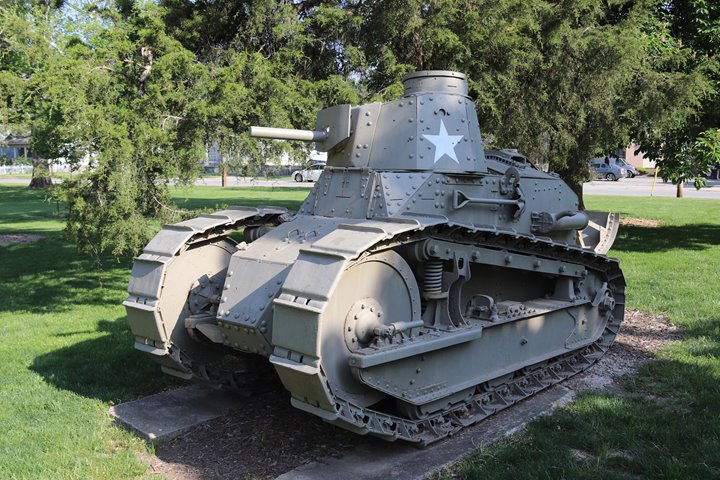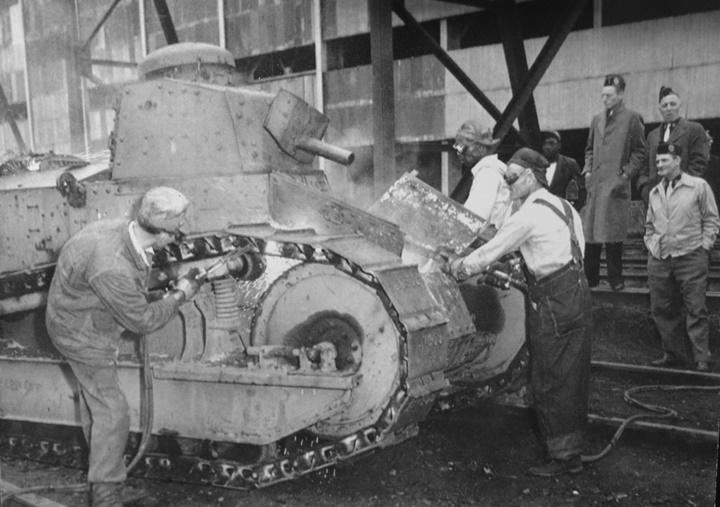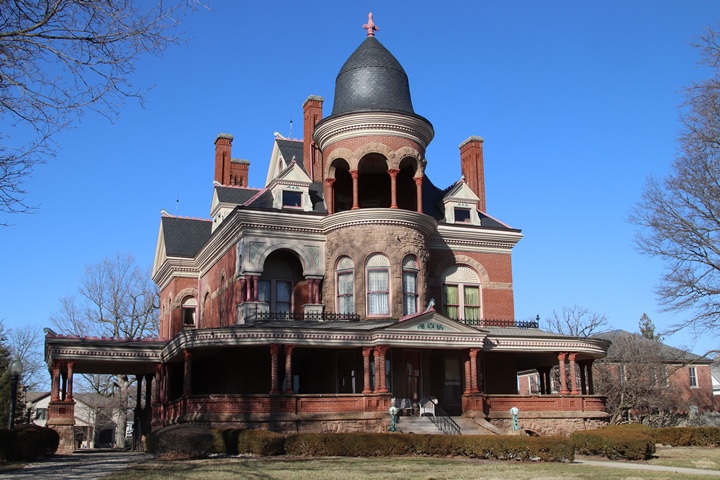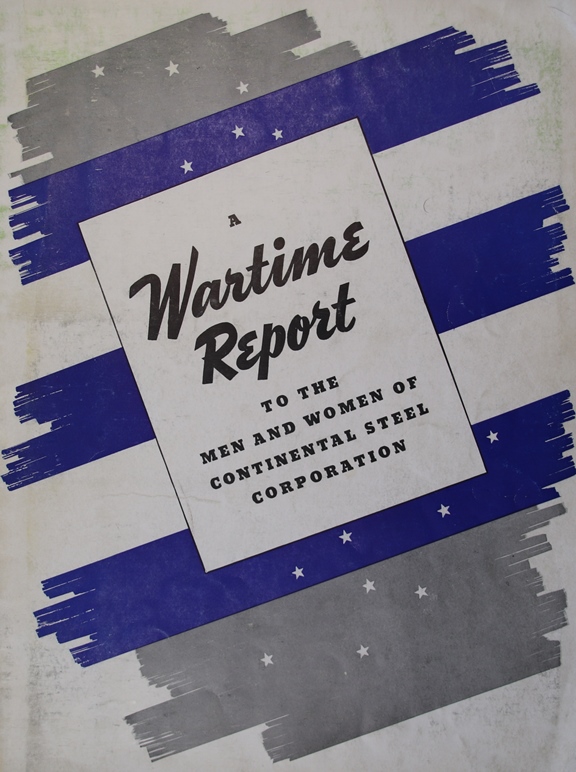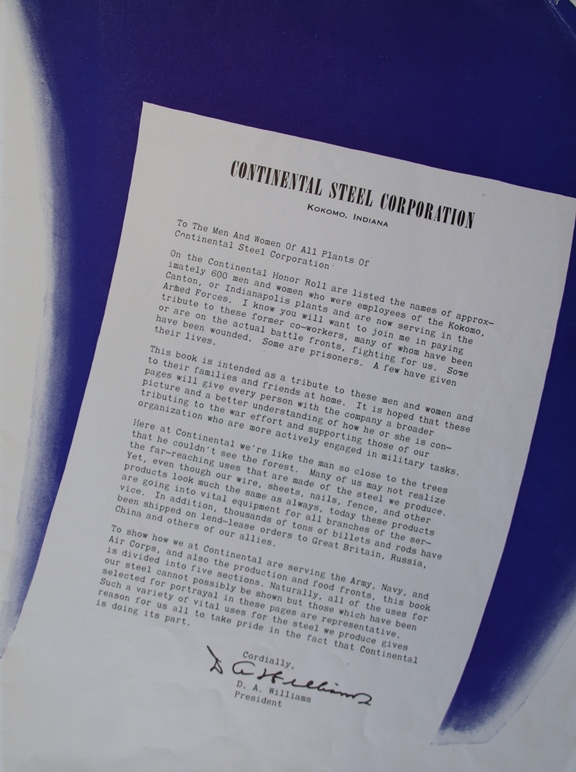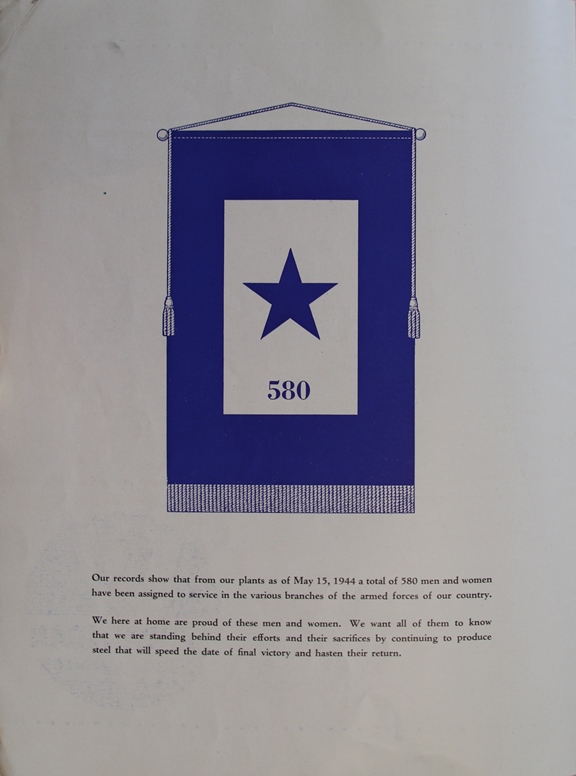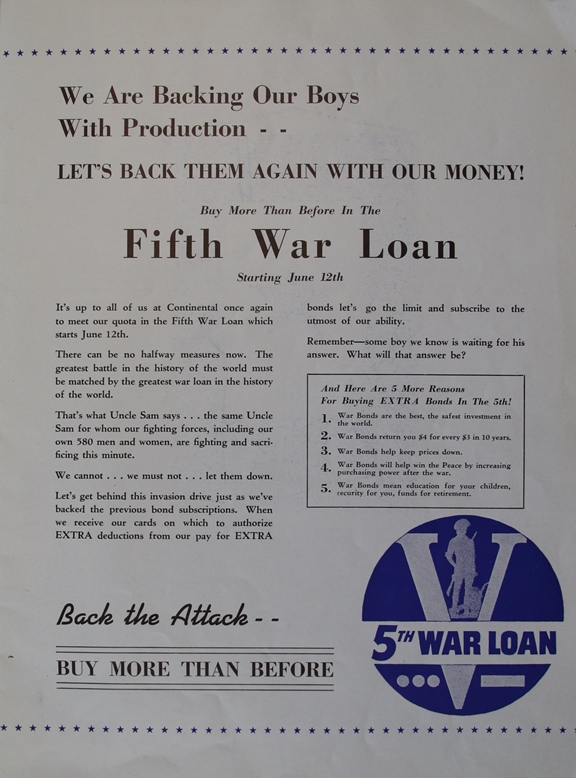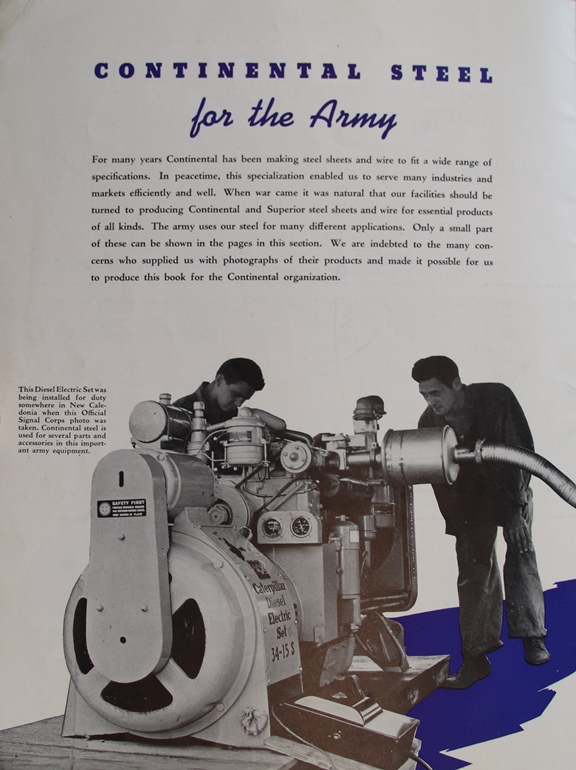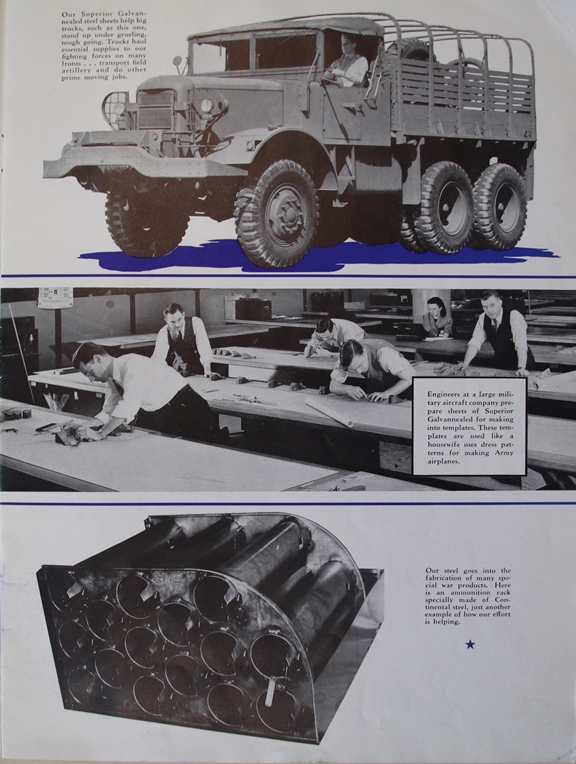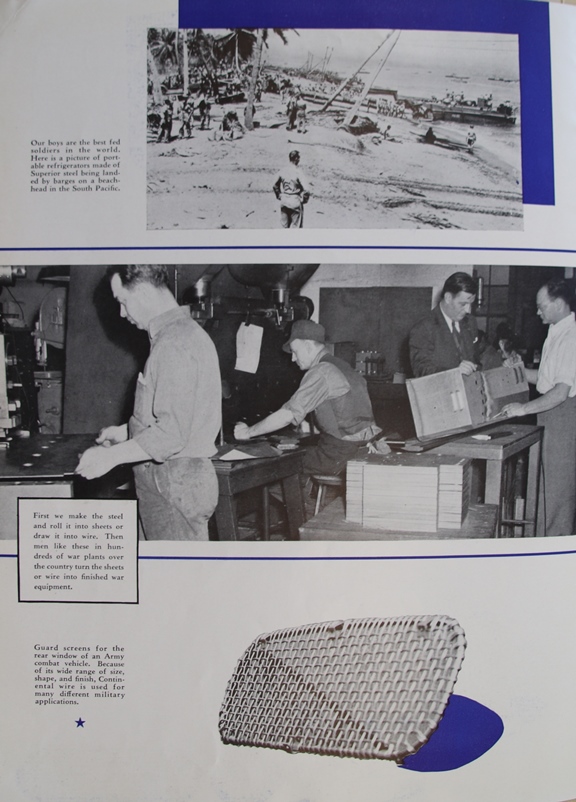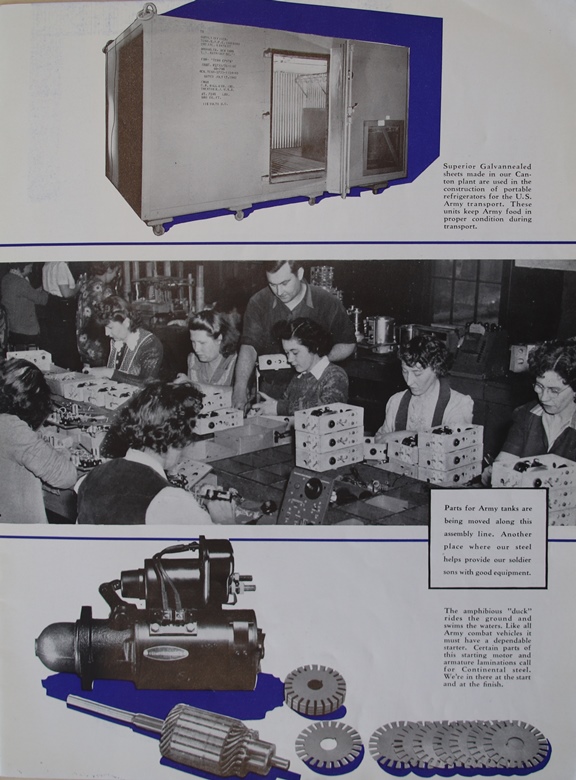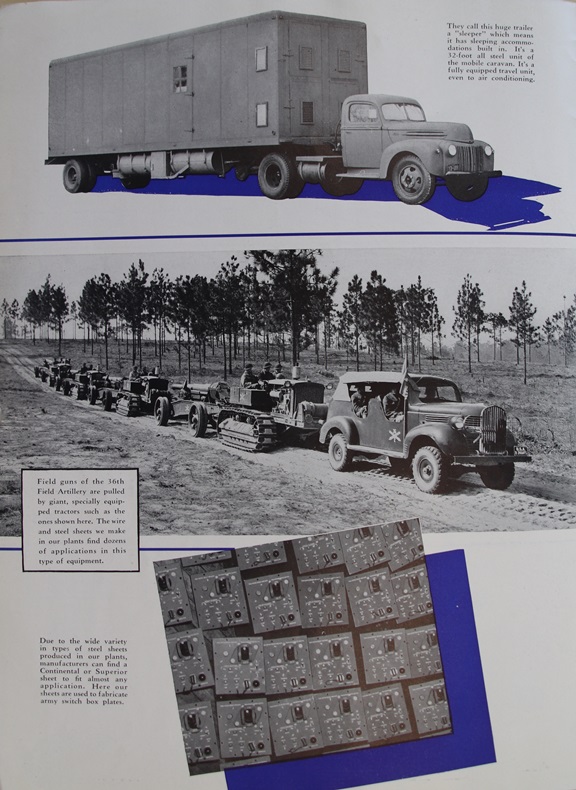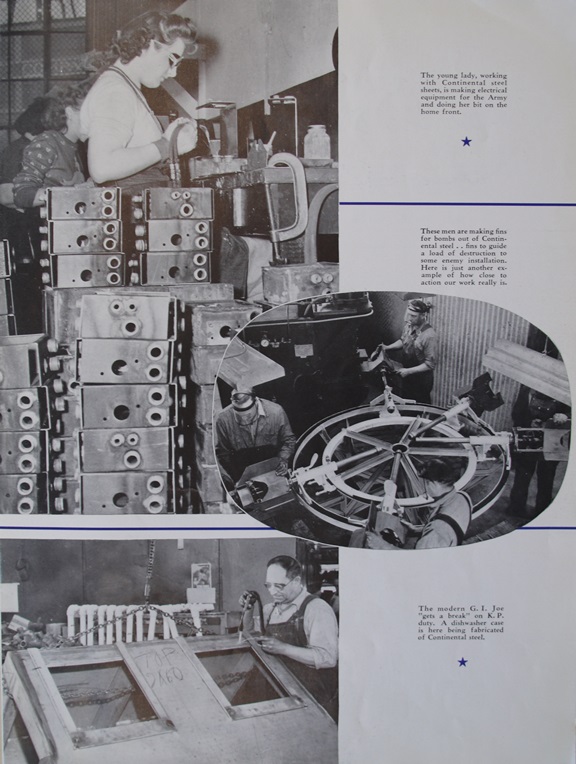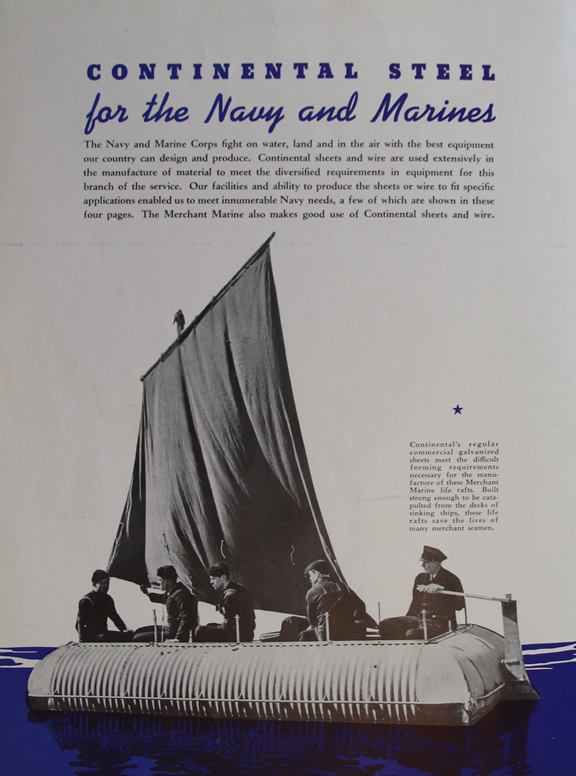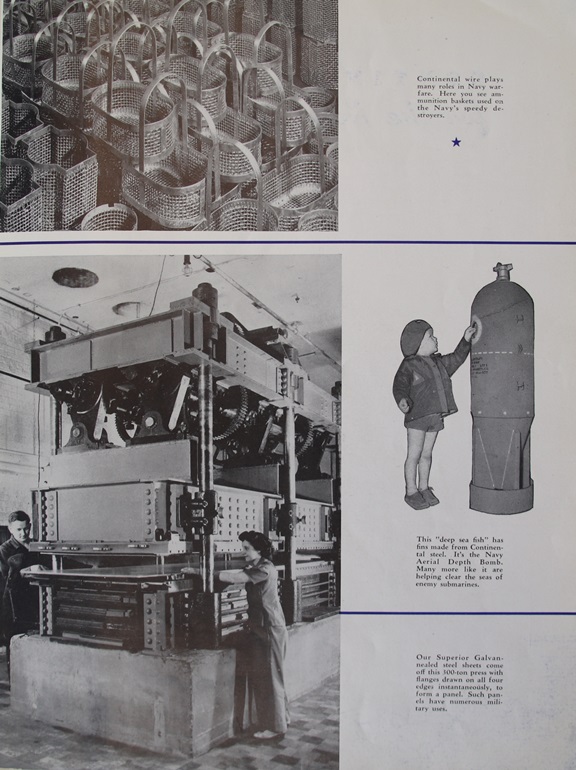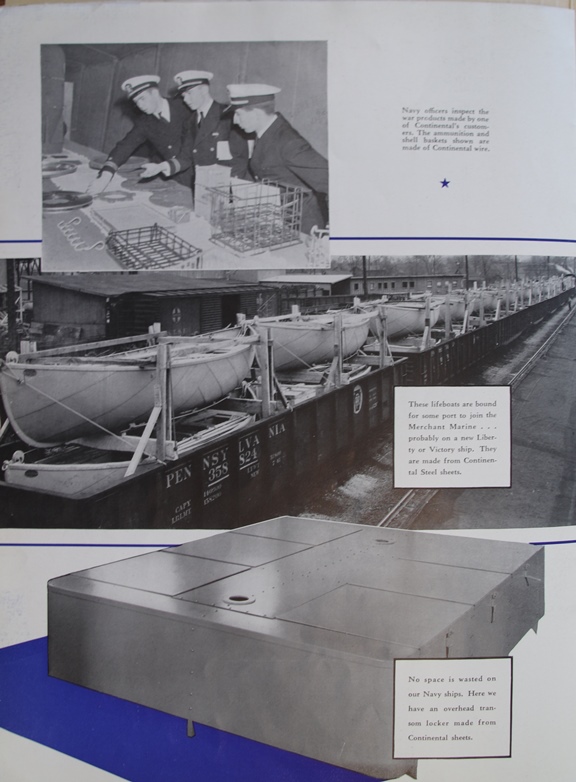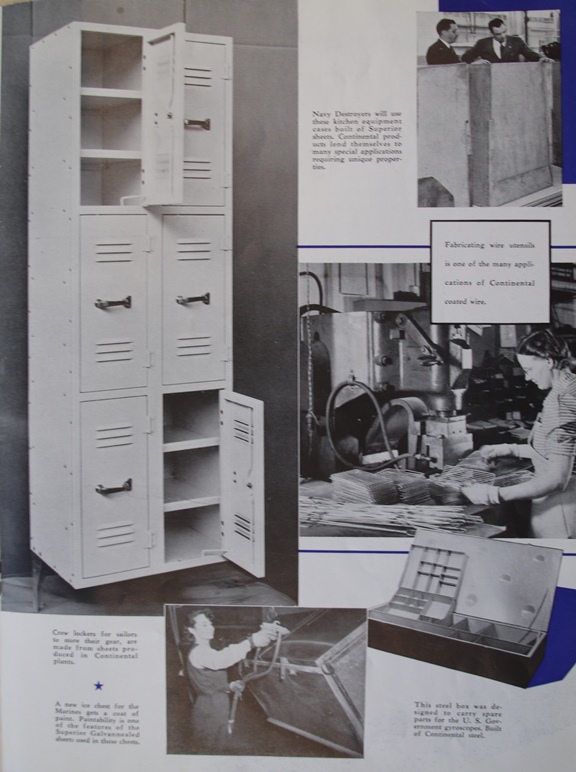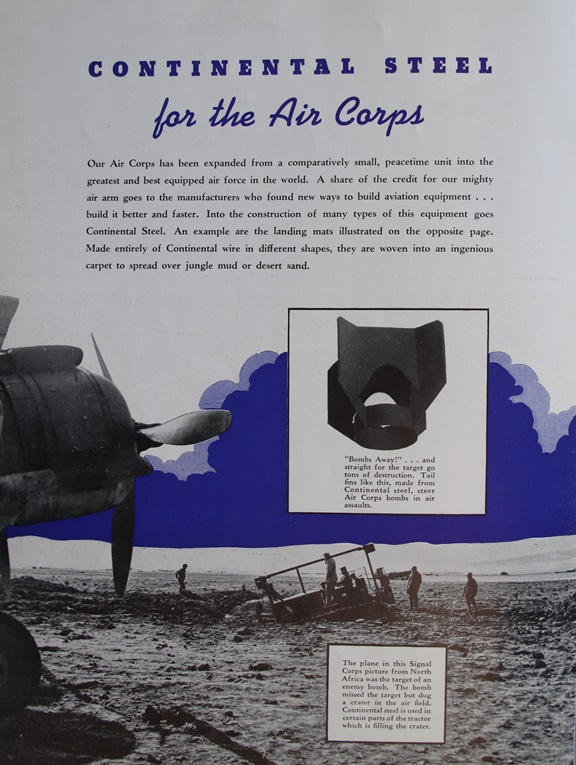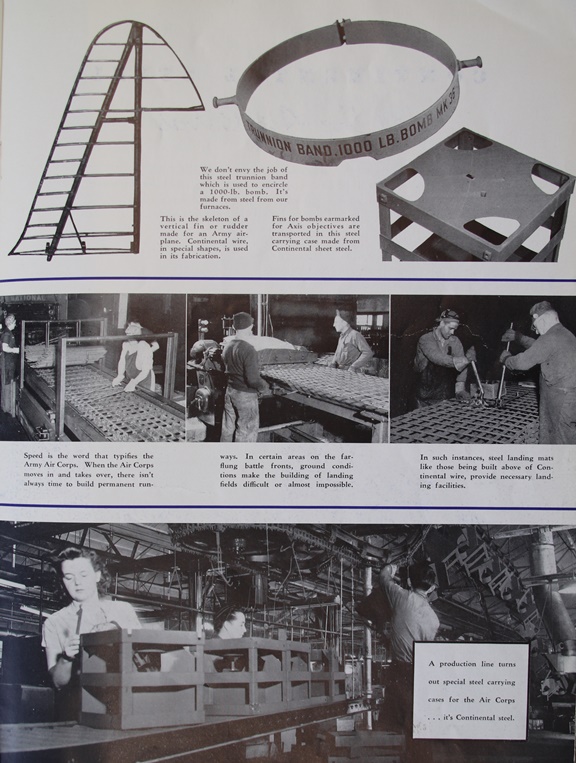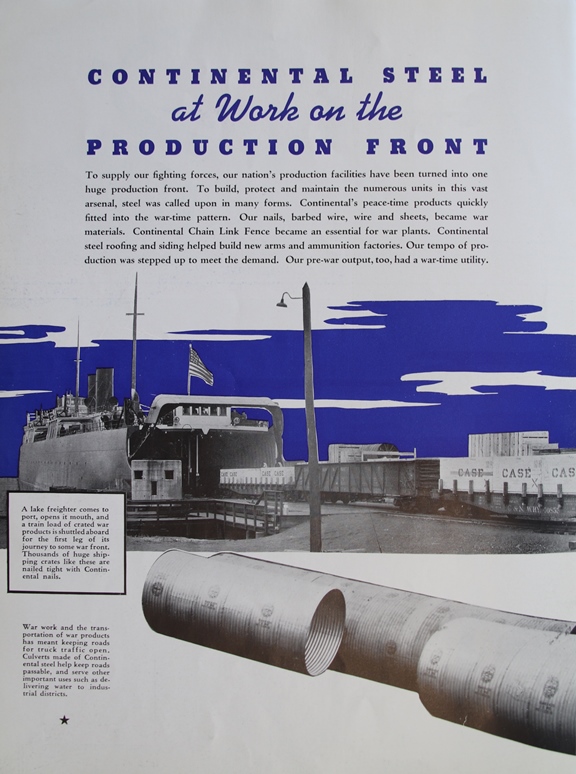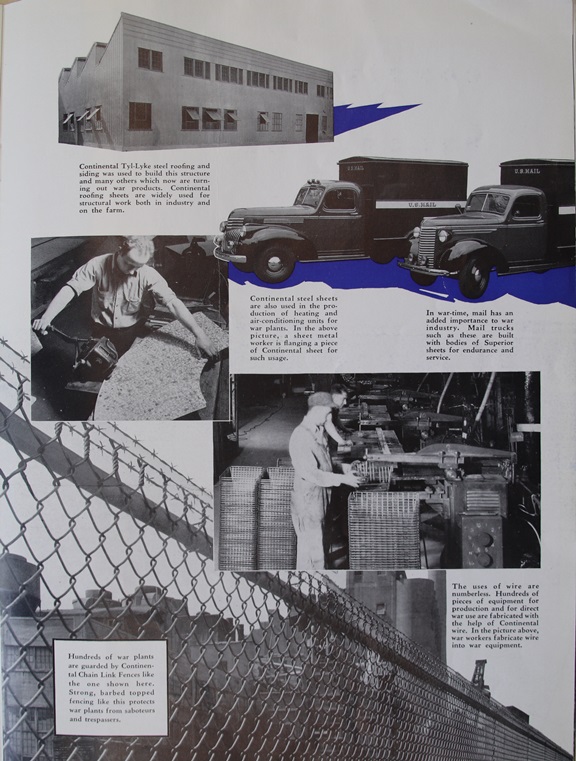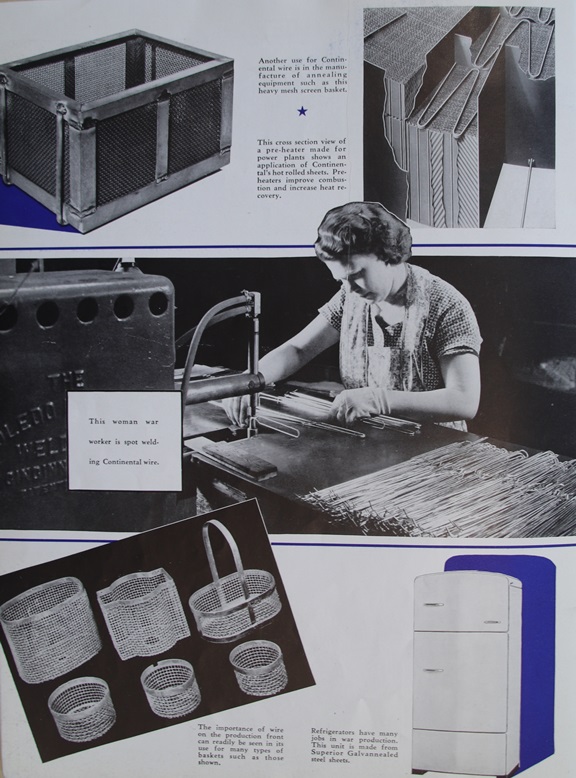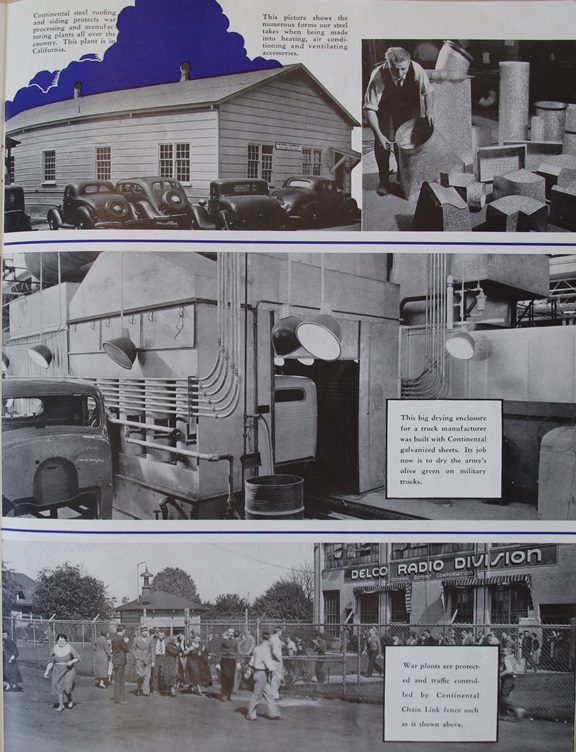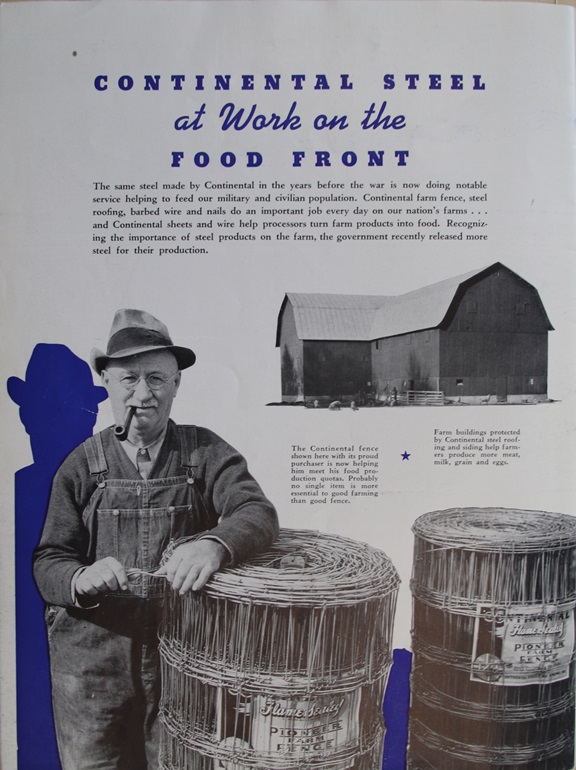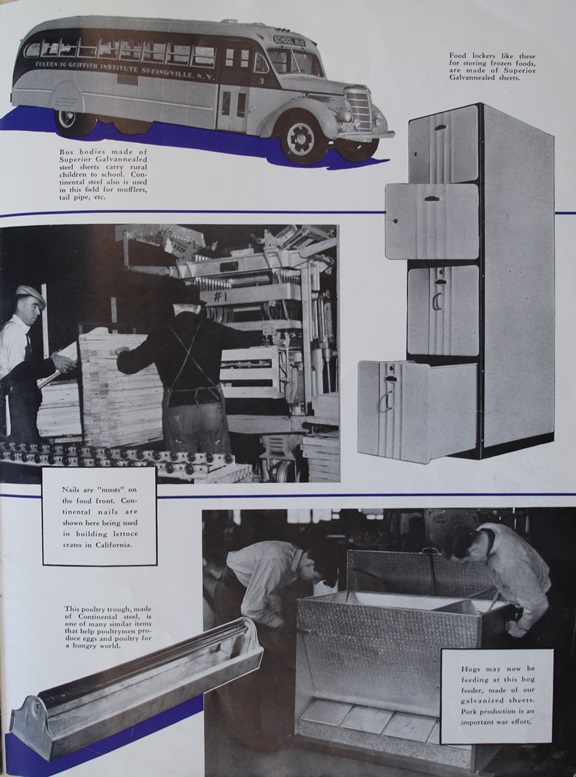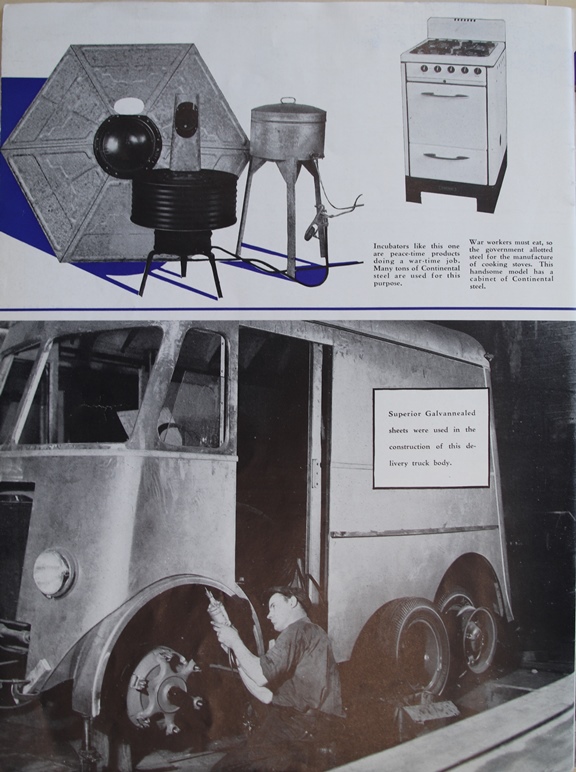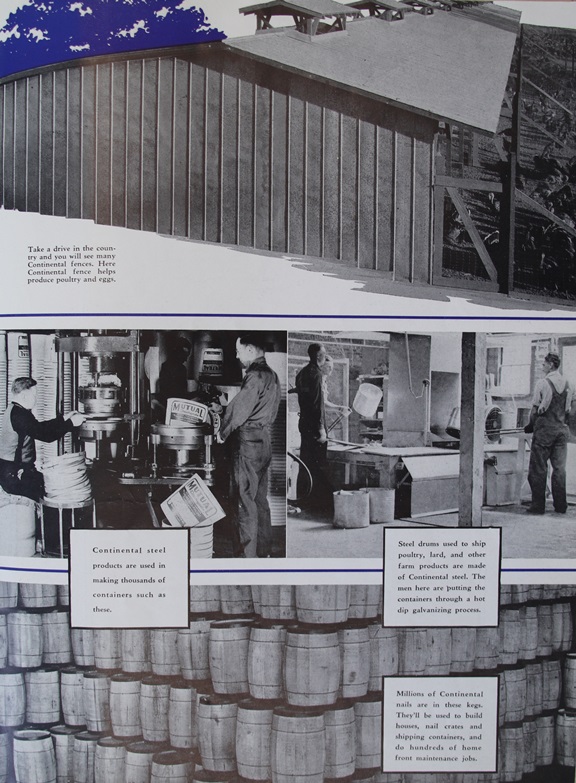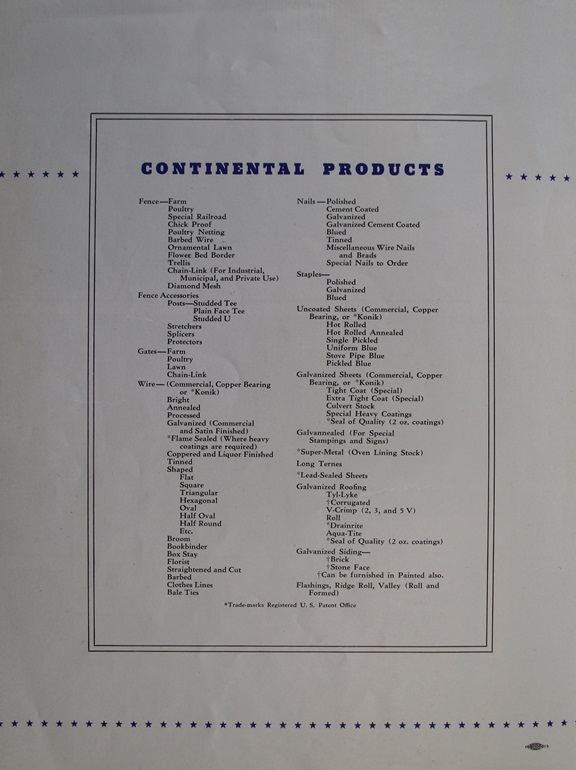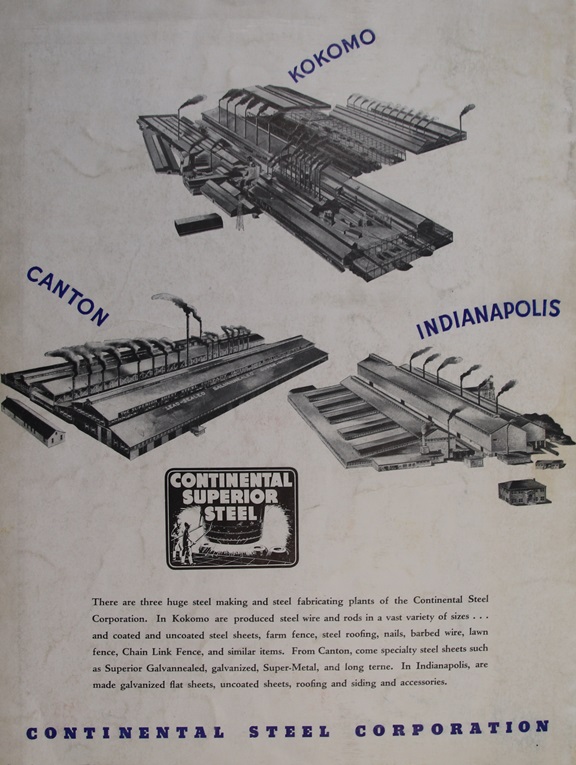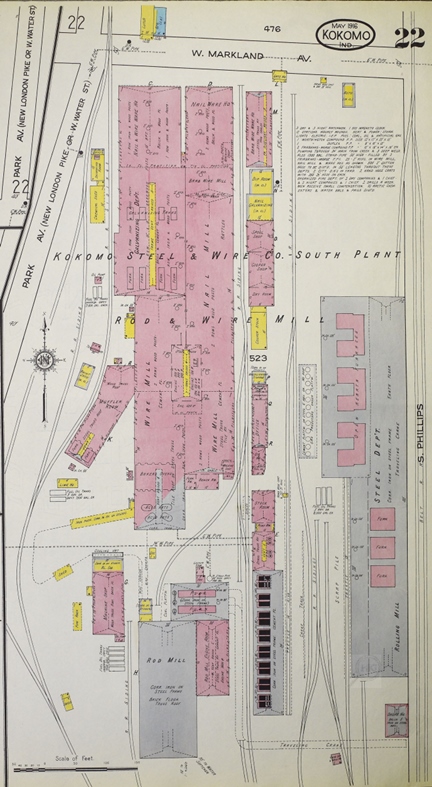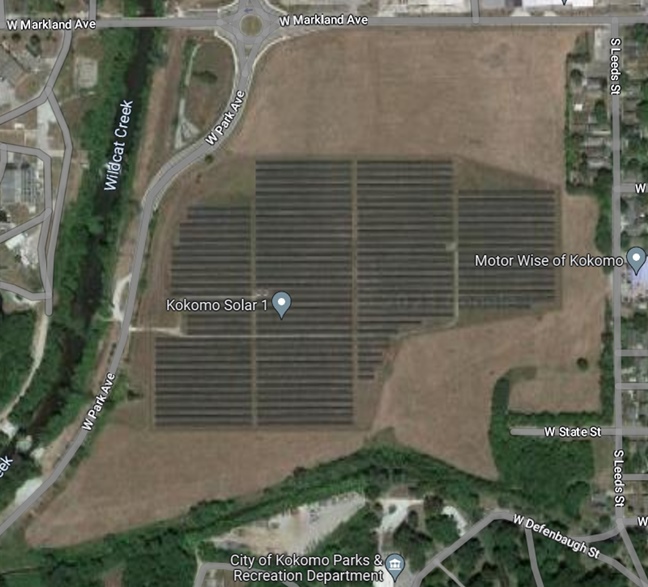|
Continental Steel Corporation During World War Two This page added 3-2-2023. The Continental Steel Corporation was created on June 21, 1927, through the merger of the Kokomo Steel and Wire Company (founded in Kokomo, Indiana in 1901) with the Superior Sheet Steel Company of Canton, Ohio, and the Chapman Price Steel Company of Indianapolis. John E. Fredrick, who had been an organizer of the Kokomo Fence Machine Company in 1896 and had served on the board of directors of the Kokomo Steel and Wire Company, served as first Chairman of the Board of Continental Steel, whose headquarters were established in Kokomo. The Kokomo operations of this corporation, however, continued to employ the Kokomo Steel and Wire name until 1944. During the Second World War Continental produced large tonnages of barbed wire, nails, and sheet steel for military use. It also provided material for products manufactured by defense industries. These included aerial bombs and fuel containers. Not only did it make different materials, but it would take scrap metal and reprocess it for new items. One example of this is taking old World War One era tanks and reclaiming the steel for use in new products during World War Two. In 1946 and 1947, Continental Steel sold off its Canton, Ohio and Indianapolis sheet mill facilities, having decided to focus on the manufacture of finished products at Kokomo. In 1968, the Penn-Dixie Company took over the company. Then after many challenges and setbacks for Continental Steel and for the American steel industry as a whole, the company was dissolved in 1986, due to bankruptcy. Continental Steel Corporation World War Two Products: Kokomo, IN mill of the Continental Steel Corporation had $6,670,000 in major contracts during World War Two. Products included in the contracts were steel, steel sheets, wire, barbed wire, steel billets, galvanized steel, galvanized roof steel, galvanized wire, nails, and fencing wire.
The Howard County Historical Society also has archives in an office building adjacent to the museum. I visited this several days later, and Mr. Randy Smith spent several hours with me providing World War Two information on four different Kokomo companies. It is from this information that I am able to publish this page on the Continental Steel Company. I highly recommend the Howard County Historical Society Museum shown above, and the nearby Elwood Haynes Museum on South Webster Street in Kokomo. Both have excellent historical information on Kokomo, and they complement each other with different displays and information. A Wartime Report to the Men and Women of Continental Steel Corporation The Wartime Report was published by Continental Steel in Kokomo, IN in May 1944. Primary source documents like the Wartime Report are some of the best sources of information for what companies produced during World War Two. They are also very rare. I want to thank Mr. Randy Smith of the Howard County Historical Society for allowing me to copy this document in order to tell the story of how Continental Steel Company helped win World War Two. For the most part, the Wartime Report is self explanatory. However, in several cases I have added some information for further explanation.
The location of the former Continental Steel Corporation in Kokomo, IN:
|
